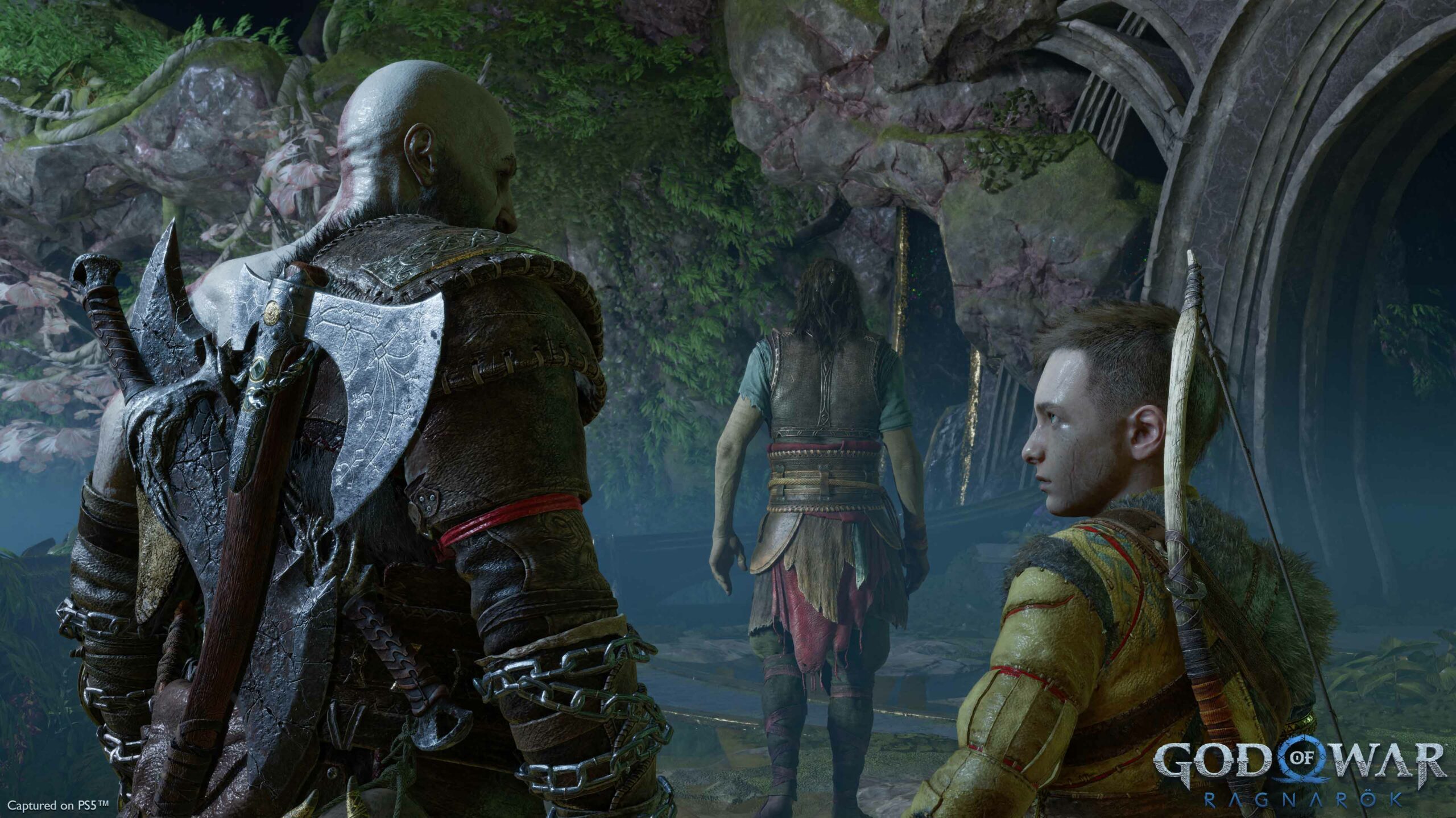
Ragnarök is finally upon us.
Four years after the beloved God of War reboot, developer Santa Monica Studio is back with its highly anticipated sequel, and it’s nothing short of a masterpiece. In the game, Kratos and Atreus are tasked with finding a means to prevent Ragnarök, the prophesied Norse apocalypse, while learning more about Atreus’ illusive identity as Loki.
To learn more about what went into crafting God of War Ragnarök, we sat down with two members of Santa Monica Studio: Bruno Velazquez, animation director, and Erica Pinto, lead narrative animator. They touched on the work that goes into bringing characters to life through animation, responding to feedback regarding a lack of enemy variety in the last game, Kratos’ flashy new combat moves and more.
Note: This is a spoiler-free interview.
Question: The cast of characters is so much larger in Ragnarök. You still have that core emotional story of Kratos and Atreus, but the ensemble is so much bigger now. So I’m curious — among all of these characters, who were your favourites to work on from an animation perspective?
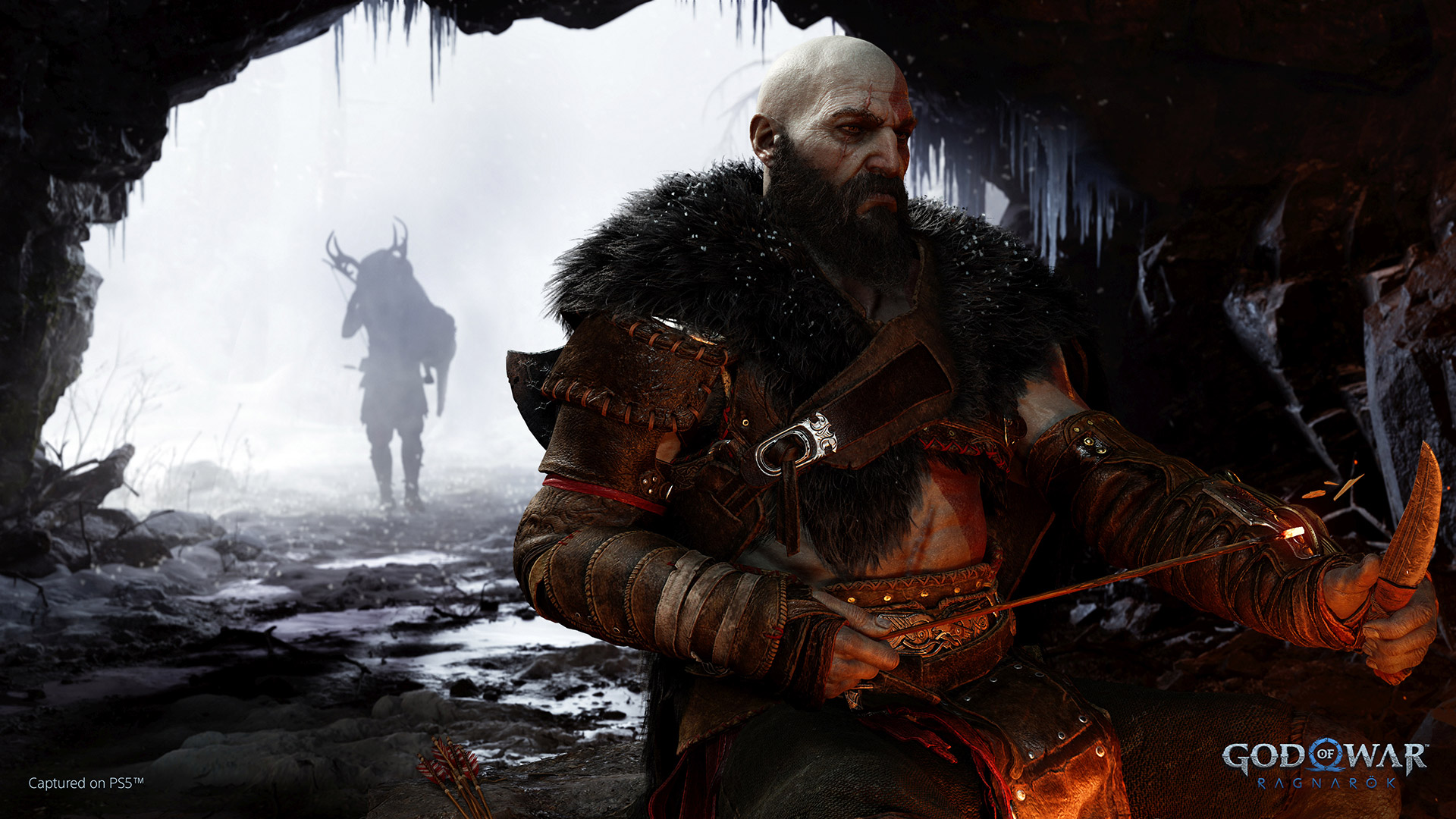
Pinto: My favourite… Even with a large cast of characters, there’s so many, and I worked God of War (2018) as well. But Freya really resonates with me, and the opportunity to really dive into her story, and try to give her some closure with what happened in the last game in [Ragnarök] was fairly exciting for me to to explore.
“We gave Kratos almost like a glow-up — we increased the number of joints in his face.”
Velazquez: I’m going to cheat a little bit because I’m going to pick two. I’m going to say Brok and Sindri. Because I feel that we have seen them evolved from 2018, where their role was a supportive role and they would interact with Kratos and Atreus in a very fun way. But I feel like this time around, they feel more like a family — they’re part of a family. And now that they’ve reconciled after the ending of the last game, they’re back together as brothers. So I think it’s fun to see their interactions with Kratos and Atreus and how they’ve evolved and grown over the past three years that Fimbulwinter [the prelude to Ragnarök] has been happening. And then Brok is just hilarious — Brok is so much fun. Robert Craighead, who’s the actor that plays Brok, just did an amazing job. And we even brought him in to shoot some of Brok’s navigation running around and it was so much fun. He really brought the character to life.
Pinto: I feel like everybody on the team is going to give you a different answer.
Velazquez: Oh, yeah!
Pinto: Some people really love some of the Aesir characters [Odin’s gods]. And some people love the returning characters. There’s something for everybody.
Velazquez: Our hope, actually, is that the players find and gravitate to one of their favourite characters. We don’t want them to like a certain one only — we want them to gravitate to who they identify with the most.
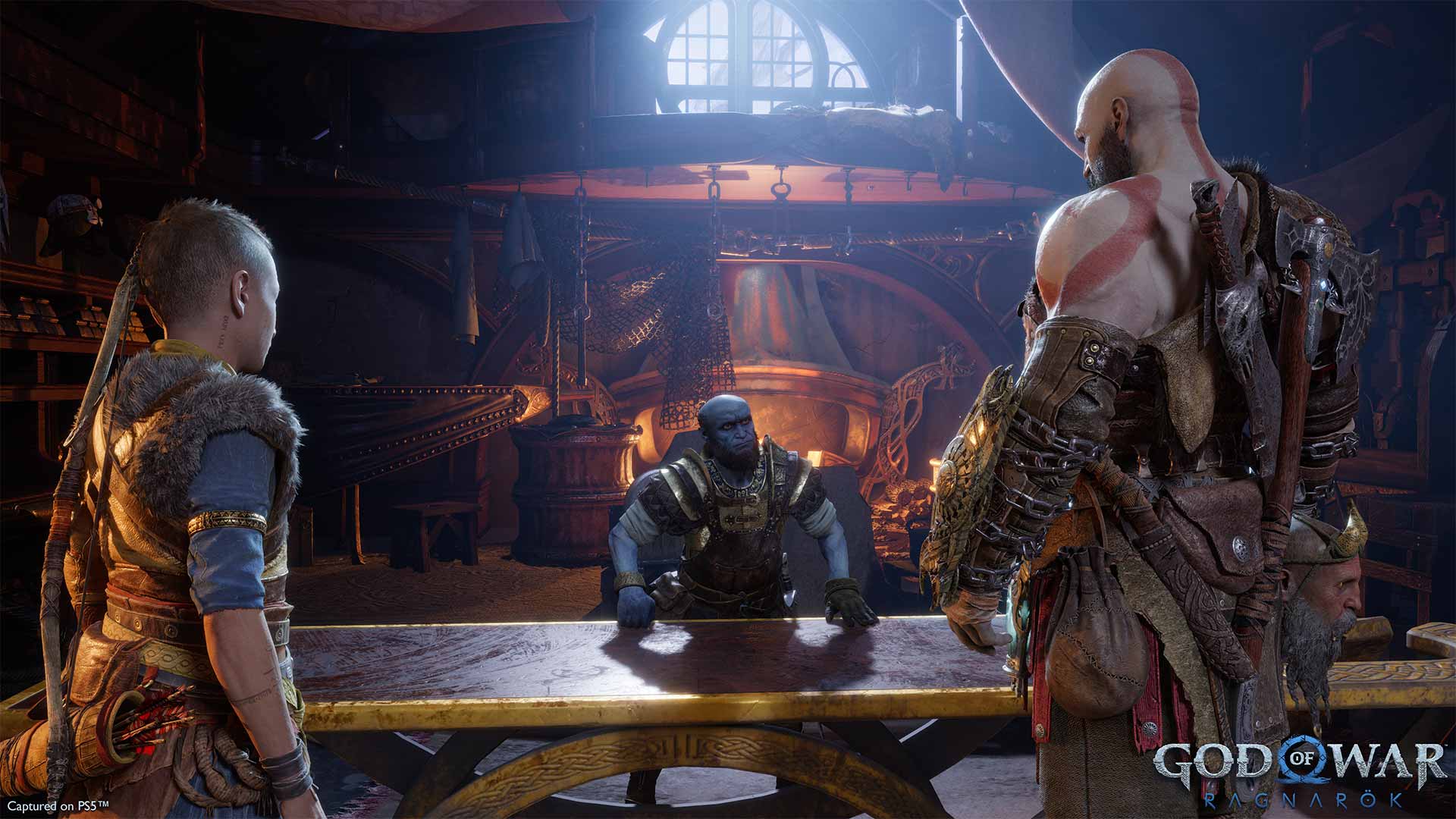
Brok, the dwarven smith, returns from God of War (2018).
Q: This game is so emotionally powerful, and you’re taking Kratos, especially, into more emotionally vulnerable places. And there are so many quiet, dialogue-free moments where it’s an interaction between him and Atreus and we see all these little subtle animations on his face. Obviously, you don’t want him to be melodramatic, but you also want to take his character and evolve him. So I’m curious — how do you strike that balance, where you have the great writing and [Kratos actor] Christopher Judge’s understated performance, and then on the animation end, you have to bring that to life? What’s the the animation work that goes into conveying that emotion and making these scenes that just floor you?
Velazquez: There is so much that goes into it — it’s definitely a full team effort. It starts with the writing, right? It starts with a really powerful strict script that the actor can connect with and relate to, and a lot of that is really driven by Chris’s performance on how he himself feels as a father, and he puts his personal experiences into into Kratos as well. And when it comes to the performance, yes, the basis is there from Chris, and our animation team then comes in takes that over and finds the moments where we could push things or enhance things or just let it be. We have a very talented group of animators on our team that have really helped us to bring Kratos to life.
Pinto: Even on the technical side, we didn’t just take the same rig from the last project. We gave Kratos almost like a glow-up — we increased the number of joints in his face. We partnered very closely with our Visual Arts Group to really capture all of the performance that Chris Judge gave us, and get all those little micro expressions, and really see how much we could bring out of every character — not just Kratos, but every character got that same amount of attention. And even like our engineering department would work on, like, ‘what is the maximum compression we can squeeze out of our engine to make sure all of that facial performance comes across and doesn’t get wiped away from for memory purposes.
Q: One of the pieces of feedback you got from God of War (2018) was to increase the enemy variety. Having beaten the game, I can attest to just how many more enemy types there are in Ragnarök. When you were making the sequel, what was the process of conceptualizing these enemies — drawing from the Norse pantheon and deciding how each enemy moves around and attacks differently?
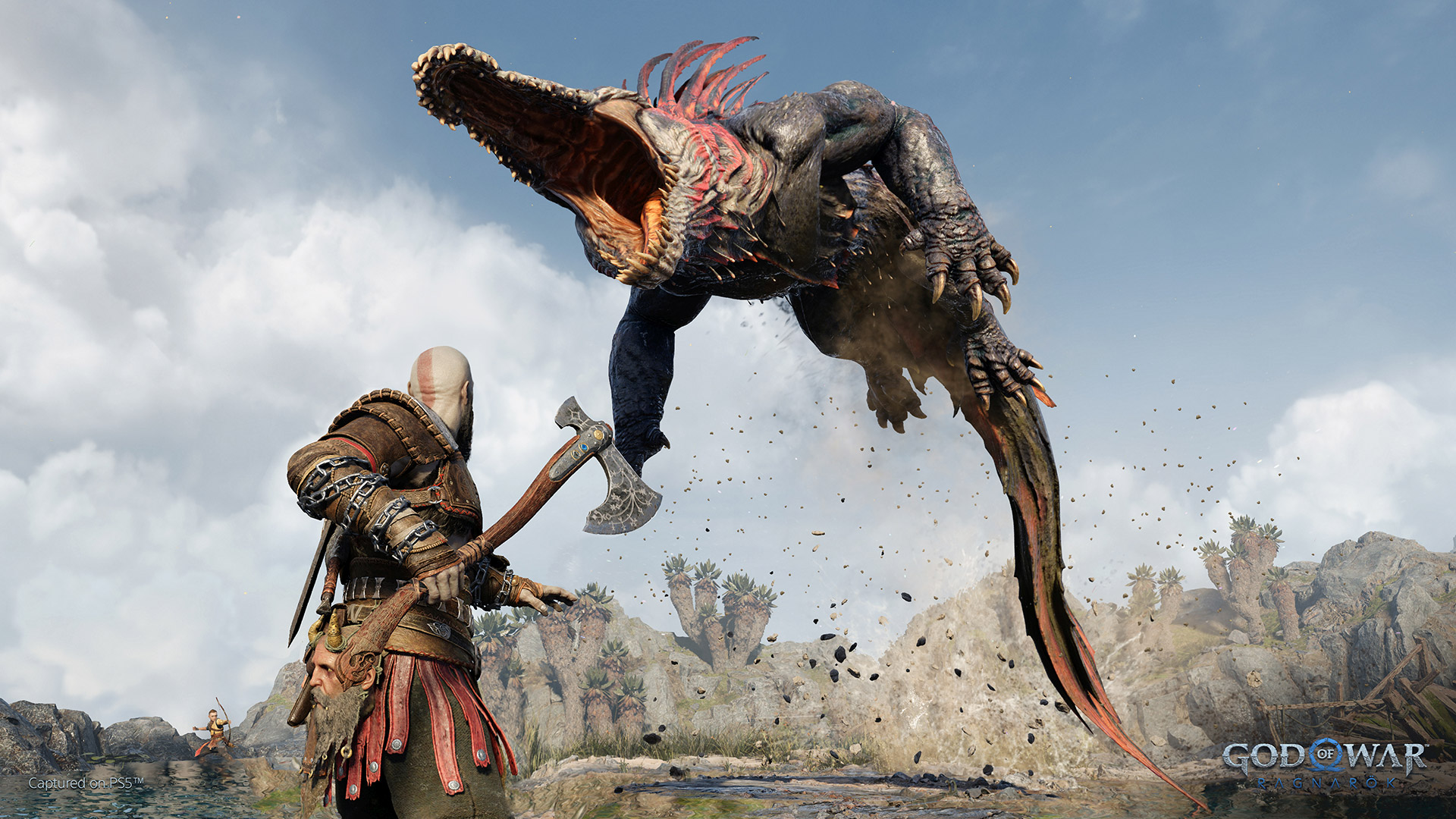
The Dreki.
Velazquez: Yes, that was one of the biggest things that we wanted to set off and accomplish based on the feedback from God of War (2018) — to increase the amount of enemies that you faced, and bosses, and make them as epic as possible. And one of the things that we wanted to do as well, other than just increase the variety of them, was also come up with a lot of different types. So you have dragons and you have big giant beasts, and you’ve got small characters that slither across the floor. So we really wanted to give a write a nice variety. We did look at Norse mythology and see what we could pull from that made sense and kind of give it our own twist and adapt it. But really, it just comes from great imagination of our visual development team that come up with.
They’d been working together with the combat designers to come up with these really interesting creatures that then goes through all the pipeline and gets to us. And then we get to have fun deciding like what type of style we want to give them. We do base a lot of stuff off of nature. Like, we have a creature called the Dreki, which is like a giant alligator lizard dragon thing. So we look at a lot of references to see how they slither across the floor. But then again, the animators, that’s where they come in and give it that spark of life and have them do things that you wouldn’t see an alligator through, like leap through the air and slam Kratos. So it’s a combination of a lot of things, like having fun with it from an animation perspective, but also basing it off of real life.
Q: You mentioned the Dreki. Some of the finishing moves for enemies, including the Dreki, involve Atreus, who’s a little older and more experienced now. What the process of coming up with moves that incorporate both him and Kratos to take down an enemy together?
Velazquez: Everything that we try to do in the game across everything is tell a story, right? So even those moves were designed in that way, because you tend to see those moves where Kratos and the Atreus collaborate together usually against bigger enemies. And the reason is we wanted to drive home that now Atreus has grown up and he’s more in tune with his dad. And it’s more like they’re a fighting unit that works together. So we wanted to showcase those moments with these big creatures and that’s that’s why there’s a couple of them with involves both of them. And that was purely the decision of not only to make it cool and make it awesome, but also showcase that growth in relationship between them and make them feel like they’re like a fighting unit that has been training for three years getting ready for Ragnarök.
Pinto: Yeah, I think that was a natural progression from 2018 to here. You saw the progression of Atreus throughout that game and now here, he’s a little older, and he’s not hanging on to Kratos for dear life anymore. He gets to do his own thing. He’s branching out. But they’re still working together. It was fun to establish — both in the combat and also on the story side — what that relationship is like.
Q: Bruno, I’ve seen you mention this is the first God of War game to have weapon-specific finishers. I’m curious — how much time goes into designing these, especially when you have many more enemy types now? Do you sit around in a room just brainstorming the most violent ways Kratos can kill enemies with the Leviathan Axe vs. the Blades of Chaos? What’s that whole process look like?
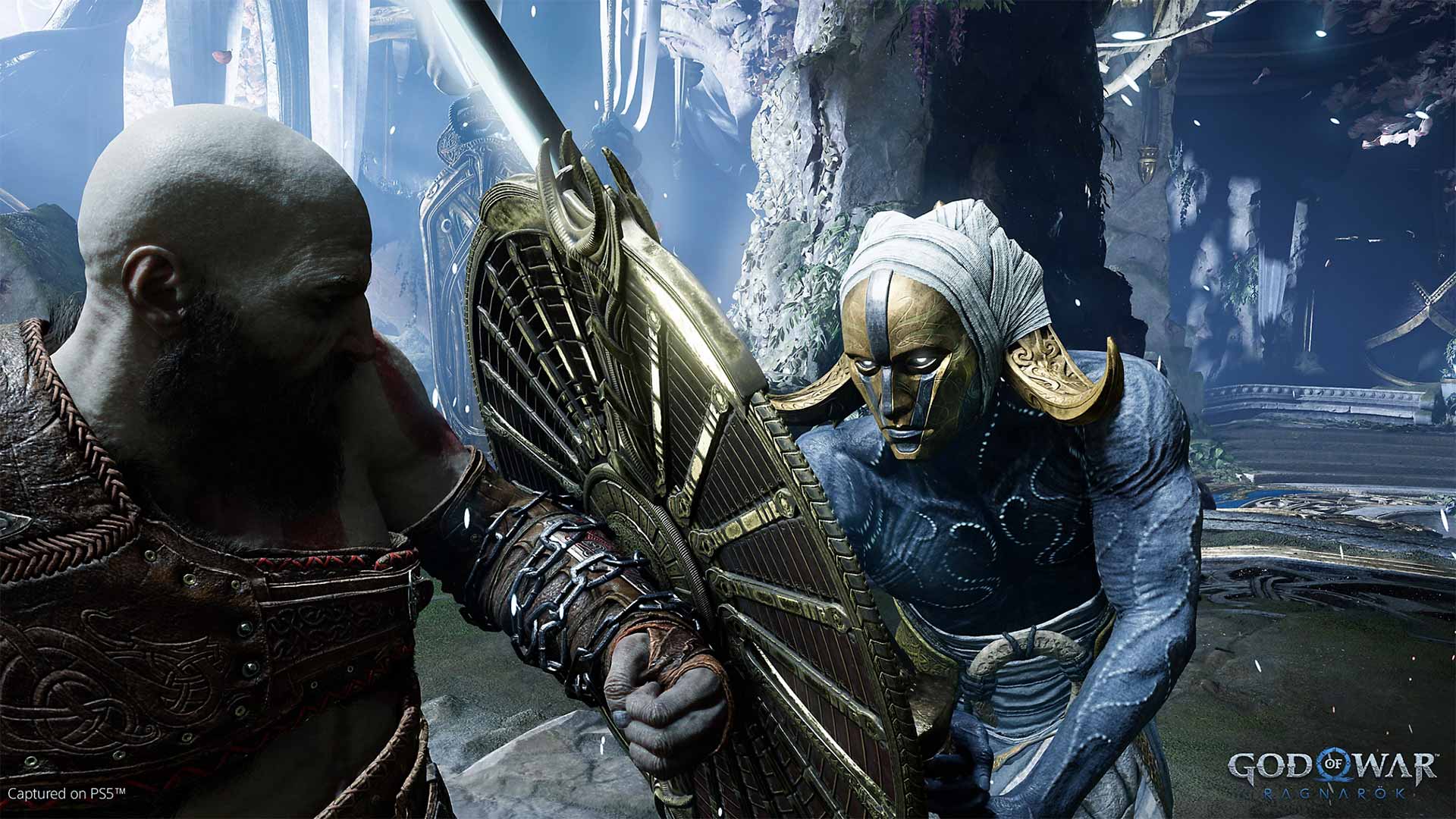
One of the new enemy types, the Light Elves.
Velazquez: Definitely, that’s been a dream that the team has had for a long time — even as far as like God of War 2 or 3. We had so many different weapons and then Kratos would always default to one animation when he disposed of them. So yeah, it was definitely a goal for us to be able to, for the first time, have weapon-specific kills. Now, you get them on the majority of the enemies — there’s some certain enemy types that you’re going to use their own weapons against them, and then you mentioned the special team up attacks with Atreus and Kratos. But the majority of the enemies that you encounter the most, we focused on them to ensure that they would have like those special animations.
And I promise you we’re nice people, but there’s definitely a dark side to us. [laughs] Because yes, we do get together with the animation team, we get together with the combat designers, we get together with some of our stunt performers, and we just come up with, like, ‘alright, what can we possibly do here to really up the cool way that Kratos can finish off enemies?’ And we try also to draw inspiration from the old games? Because our fans have been with us for a long time and want to make sure that they feel that, ‘oh, that’s a cool callback to that certain kill.’ So it’s a combination of coming up with new ideas and looking at the past and drawing it forward.
Pinto: That’s always the challenge, but also the creative thing. Like, ‘oh, we did that in God of War 2, do we bring it back or what can we make new?’ Because Kratos has been around for a while, so you want to make sure you’re not just copying yourself. We also want to have fun and let the animators stretch their creative flexes.
Q: You have all these new Norse gods, and I won’t spoil some of them here. But for a lot of reviewers, myself included, Odin was a real highlight. Then there’s Thor, who you’ve shown a lot more in the marketing. When you design these characters, how do you give them that sort of unique Santa Monica Studio twist? And how do you bring that to life through animation, especially when you have characters who are shorter or taller or larger, like Thor?
Pinto: It starts all the way from script and our visual development team saying, like, ‘what is something we can try? That’s new.’ And I’m really proud of the diversity we were able to bring to our cast, trying different body types, different genders, different roles, and just seeing how many different types of stories can we tell and then be inclusive in that sense. And the actors bring a great deal to their performances — giving them the script, but then letting them bring their own thing into it. You mentioned Thor — like, Ryan Hurst is huge as well. So just seeing him on the stage and seeing how he relates to other actors, it’s a great collaboration. Bruno, do you want to talk a bit about the size difference a little bit? [laughs]
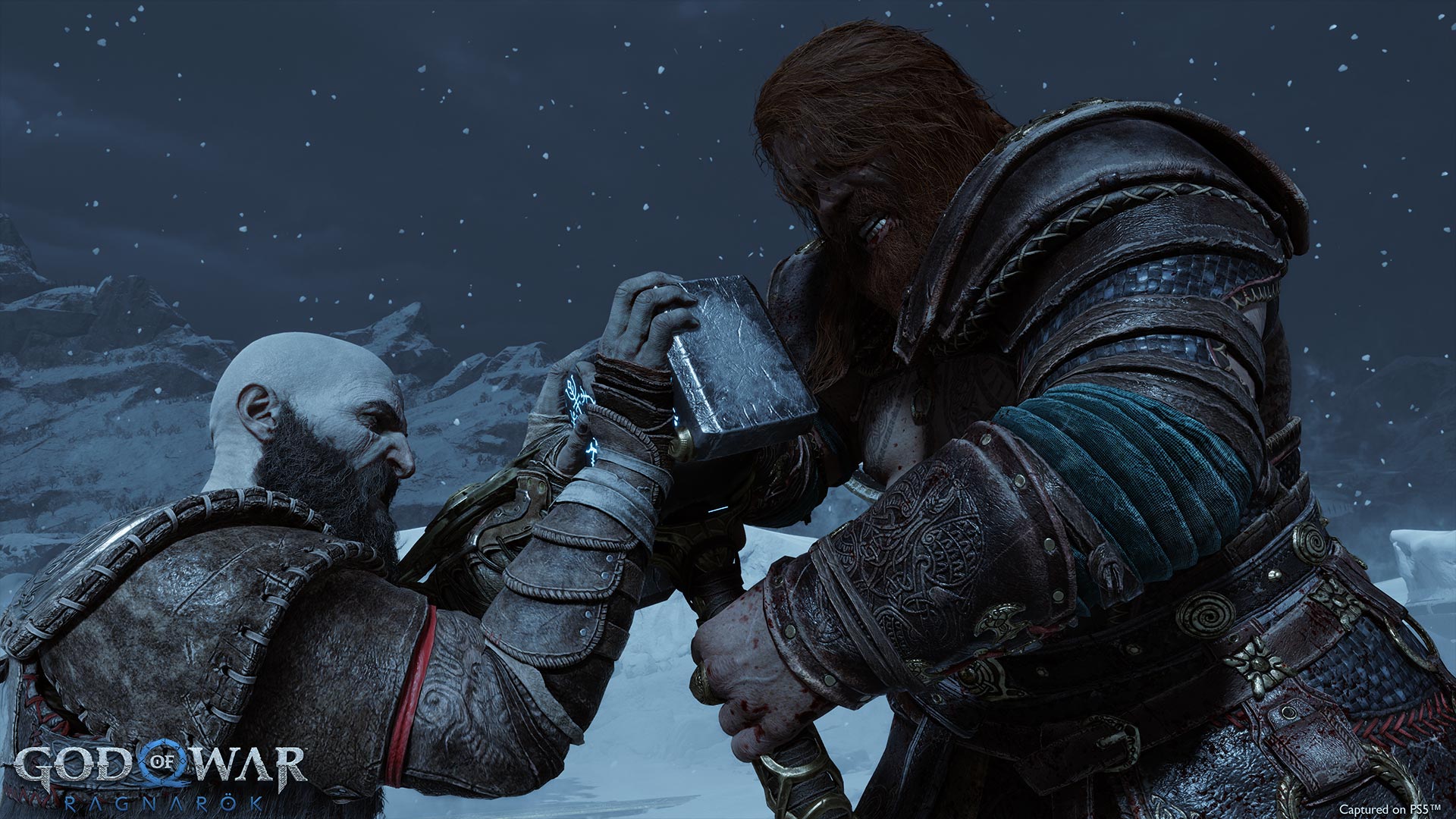
Thor has a bone to pick with Kratos.
Velazquez: Oh yeah, of course. We had to do a lot of tricks on stage when we were performing with our actors. Because the actor who plays Tyr [Ben Prendergast] is not nine feet tall, right? So we have to get very creative. For example, for the actors that played Brok and Sindri, we would put a picture of their [characters’] heads on their chests, because that was about the height in relation to Kratos where their heads would stand. So Chris Judge would have to look and act to their chests, essentially, where the face plates of Brok and Sindri sweetie were, and that would help us sort of get the eyeline correct and get the connections between them. And of course, there’s a lot of work that needs to be done sometimes to clean up the motion capture data to make sure, especially when they shake hands or they exchange items or something, there’s a lot of alignment things that need to happen. But yeah, we try to make it as easy as possible to visualize for the actors what it would be like to be those characters. And one thing that’s really helpful on stage is that once they have put on the gear, the suits, they can see themselves as a characters up on screen. So that already puts them in the mood and they can see a size and relationship between the characters happening live on screen. So that is very, very useful to help us accomplish our goals.
Pinto: That was also pretty essential for our cinematic arts team who are controlling the camera and the choreography. You need to be able to see how you’re going to frame the characters so they have a virtual camera to say, ‘okay, we need to look up more for Tyr and down more for Brok and Sindri, so having that real-time preview was very important.
Q: The word “epic” is used a lot, but I think it’s very true, in every sense of the word, for this game. Even in the first few hours you have two incredible setpieces — Freya chasing Kratos in the sled and then Thor comes in fights Kratos. And there’s many more that I won’t spoil. But when you design these set pieces, which are so rooted in narrative but also have such big scale and action to them — what kind of work goes into that? Even when you’re animating everything, even little things like when Freya attacks, then Kratos falls off the sled, gets back on it, they swerve left and right… How do you conceive of and ultimately create these kinds of setpieces?
Velazquez: It’s a full team effort. It’s a collaboration between our combat design team who designs those big epic moments, big fights, but then we collaborate with animation and also our cinematics group. Because, as you see a lot, especially in the two moments that you talked about, there’s a lot of gameplay, but then it’s interwoven with these personal moments where you get really close to the characters. And then you need to have these cool transitions that happen between the gameplay moments. So there’s definitely a lot of collaboration that happens. Erica’s team, for example, in the Thor fight, especially towards the end, they had to intermingle this, going from gameplay over to this really cool epic cinematic that I won’t spoil. But it’s definitely a collaboration. Do you want to add anything to that, Erica?
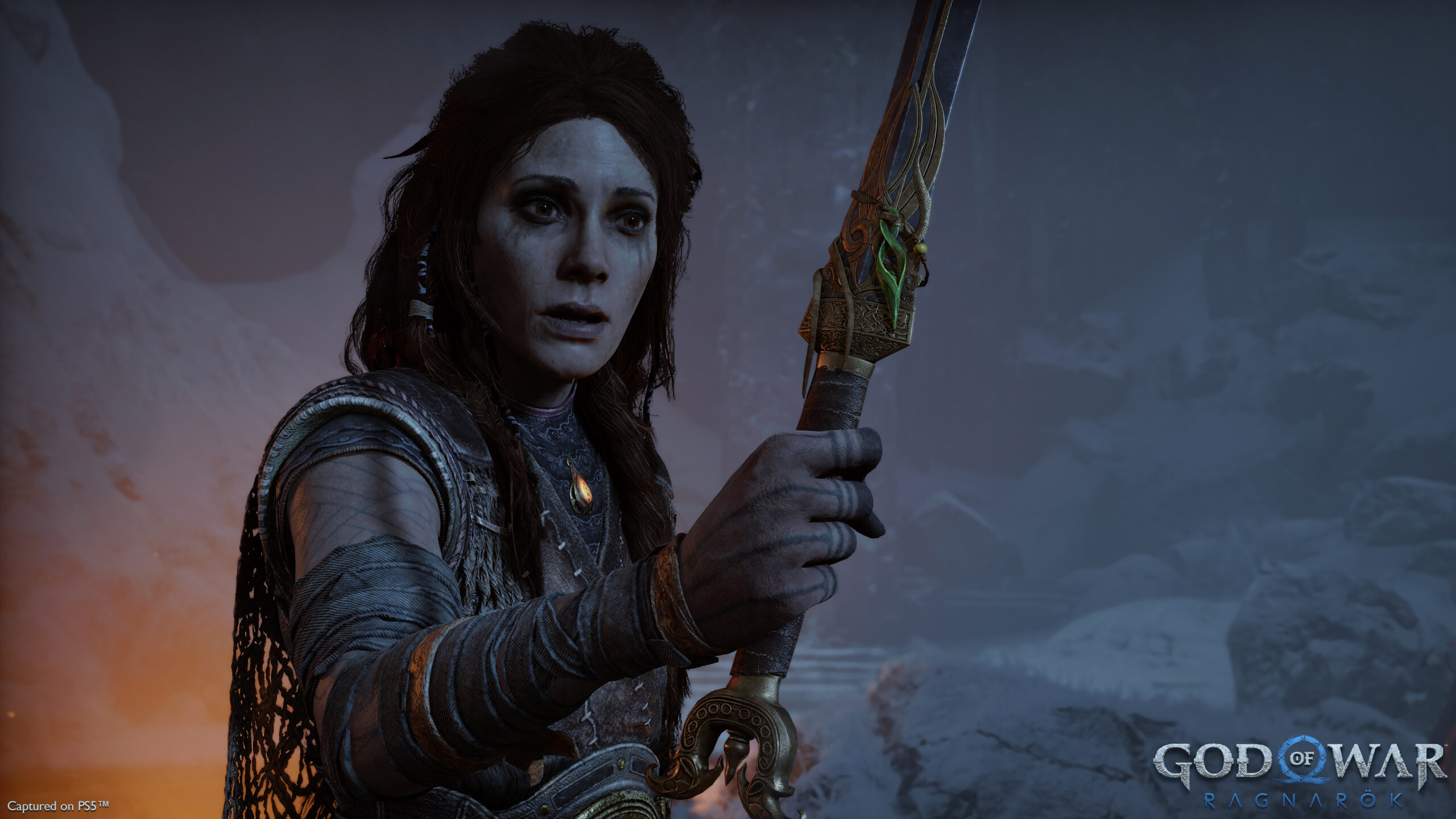
Freya also isn’t happy with Kratos.
Pinto: Yeah. From a narrative standpoint, it’s about, ‘what is the story we’re trying to tell and what are the beats that make sense there?’ And then from a technical side, it’s like, ‘well, if the player can be anywhere in this arena, how do we work them into place so that we can have a cinematic happen in the right place so that they’re looking in the right direction? And at the end of the cinematic, lead the player to where they want to go next?’ There’s definitely a combination of artistic and technical endeavors to pull this off.
Velazquez: Yeah, there’s definitely a lot of tricks under the hood that the player may not perceive and see, but that are happening to make sure that things get lined up and everything gets to the point where we need it to be.
Q: One of my favourite things about the combat this time around is that the levels are bigger and more interactive. Specifically, there’s a verticality, with a fluidity of going to higher platforms or further platforms using the blades. Where did that idea come from? And from an animation perspective, what did you have to do to ensure that it feels seamless? Where you’re maybe fighting on the ground, then you maybe you see a Draugr up high, you launch yourself up there, then jump back down and slam an enemy. There’s a seamlessness to it. What did you have to do to ensure that and maintain that combat rhythm?
Velazquez: One of the goals we set out to accomplish in Ragnarök was to give the combat and give it boost and make it more fluid. So I think one of the biggest things was like, ‘Hey, let’s create some arenas that have verticality so that you’re constantly going up and down, jumping off platforms, reaching higher places. So, of course, the grapple hook made the most sense, because it was something that Kratos did before in the past games. We do look to our previous games to see what we can bring back to the forefront and present it in a new way. So to me, that was an immediate early idea that was conceived: ‘yes, we need to have Kratos have more mobility.’ And now that Atreus is more independent as well, he didn’t have to wait for him to jump on his back or anything like that. So now, Kratos is able to move around the arena more freely. And that was just a perfect way that was drawn from the past games that for him to be able to do that. And we just needed to make sure that it felt snappy and responsive. It was treated almost as a combat move in and of itself, because it needs to feel as good as a combat move. And I think that’s the secret to making it flow.
Q: And part of the change with Ragnarök is you have the Blades early on, so you come up with all these ways to integrate them into combat that — verticality being one of them. What are some of your favourite new moves with that? For me personally, from an animation perspective, the one where he’s like spinning the blades kind of like a lasso.
Pinto: [laughs] That’s still my favourite!
Q: [laughs] Yeah, so I’m curious if you could kind of touch on some of that — your favourites and the sort of the philosophy behind coming up with them.
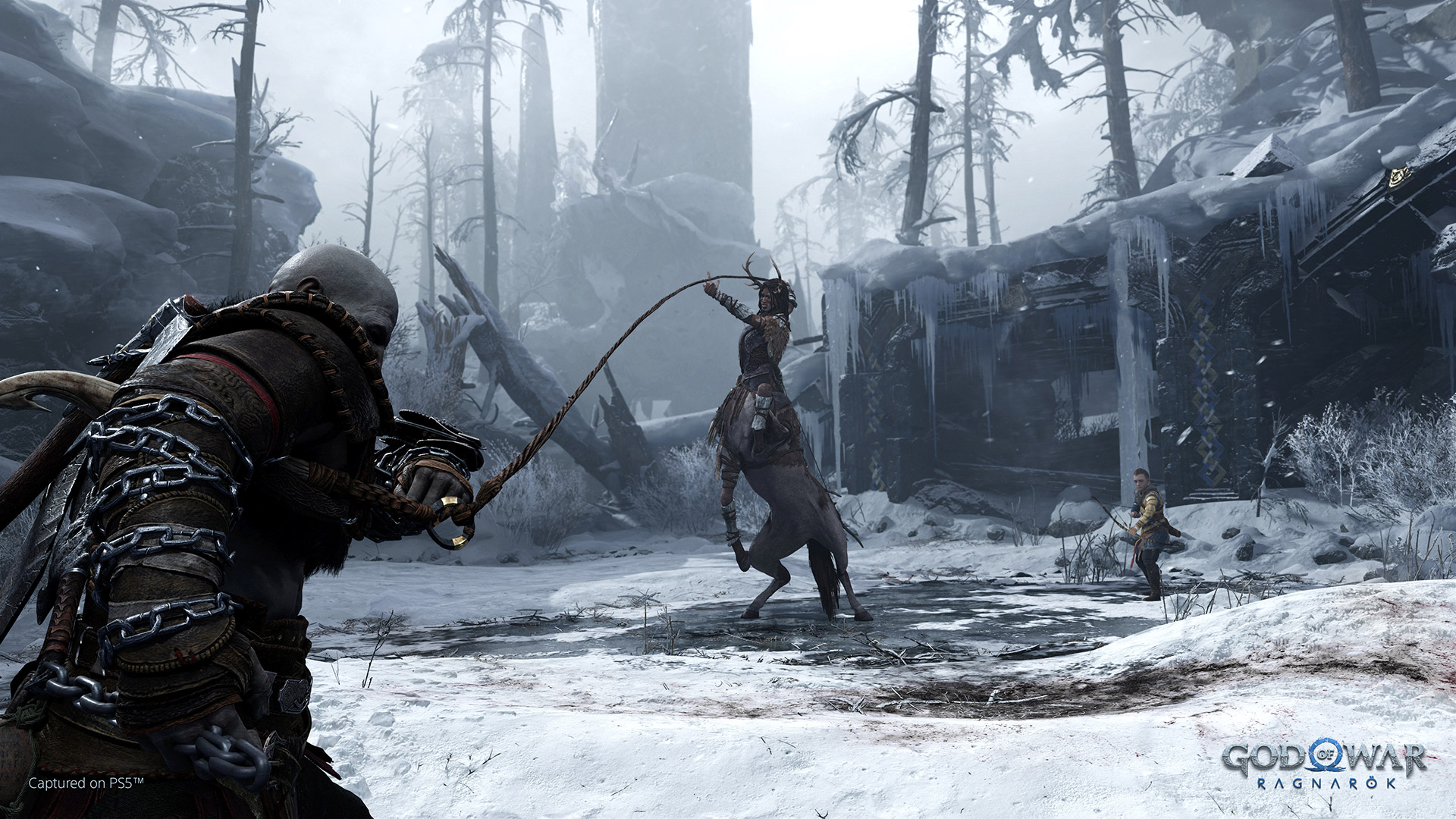
Velazquez: Do you want to elaborate on why you like that move so much, Erica? [laughs]
Pinto: [laughs] It almost feels like a callback, like he’s just playing with his food. Just the power of it — the bigger flames and bigger effects, it just feels more epic and just feels good to play it.
Velazquez: For me, personally, speaking of the addition of the verticality to the fight spaces, I love doing the off the ledge moves. you get a different one whether you have the Blades, the Axe or you’re bare-handed. You can even summon the Axe in the middle of it, too. So jumping off a ledge and coming down on enemies then seeing them pop up in the air and then you’re able to continue the juggle. It’s so much fun. I’ll never get tired of doing that move.
Pinto: Part of what’s fun is being able to change different moves together. Combos, you know — that adds so much variety visually and just makes things stay fresh.
Q: One of the other new things about this game is all of the accessibility options you have. I think a lot of people don’t necessarily understand why these are important. So for the team, why was it significant to add these? Why is accessibility important?
Pinto: One of our core mantras is, ‘how do we reach as many players as we can?’ And I think accessibility just opens it up for anybody to be able to play. We don’t want to limit it just because of what we created. So I think that we took a lot of feedback from the last game and said, ‘Well, okay, how can we make this even more available for anybody to play?’
Velazquez: Yeah, absolutely. And we draw a lot of inspiration from some of the other PlayStation Studios teams that have done great accessibility features, like Naughty Dog. They’ve always pushed forward in their games a lot of these things that make it easier for people to play. So we were inspired by them and wanted to go ahead and offer as many options as possible. And with some of these things, they could help any player feel more comfortable and change the way that they experience the game. I think that’s very important, because in the end, just like Erica said, we want as many people as possible to be able to enjoy and play the game and get to experience that adventure with Kratos and Atreus and really get the most out of it.
This interview has been edited for language and clarity.
God of War Ragnarök will launch exclusively on PlayStation 4 and 5 on November 9th.
MobileSyrup may earn a commission from purchases made via our links, which helps fund the journalism we provide free on our website. These links do not influence our editorial content. Support us here.


